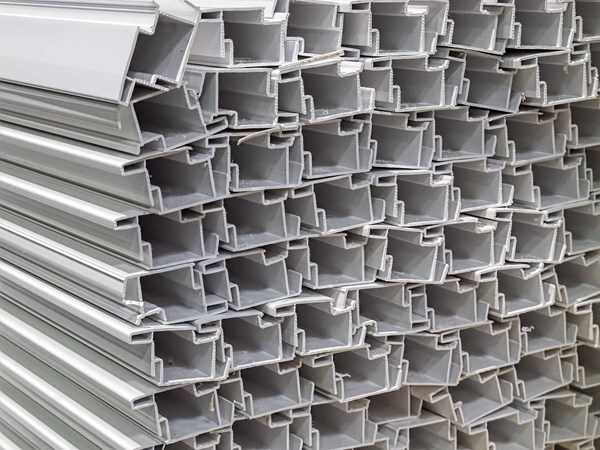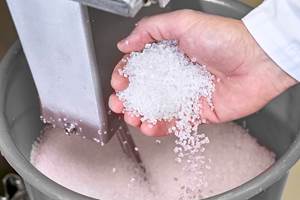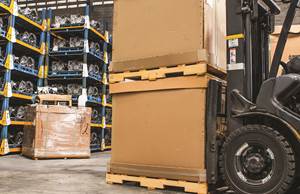Upward Pricing for PS, PVC and More
Higher global oil prices and derivative feedstocks are among the factors driving resin price increases in PS, PVC, PET and nylons.
Higher global oil prices and derivative feedstocks are among the factors driving resin price increases in PS, PVC, PET and nylons.
Here we are into the shortest month of the year and already the industry is seeing price increases either being implemented or about to be. Just last week, I tried to tackle what is taking place and how things might turn out, at least going into second quarter, in the typically volatile polyolefins pricing arena.
Meanwhile, in addition to supply/demand fundamentals, which vary depending on the resin, the combination of higher global prices of crude oil and key resin feedstocks, along with planned and unplanned production outages, are major factors driving price initiatives for other resins as well. Polystyrene and PVC are among them, and Mark Kallman, v.p. of client services for engineering resins, PS, and PVC at Resin Technology, Inc., recently offered an update.
• PS: Driven by January benzene contracts that moved up by nearly 60燃/gal, PS prices moved up 5燃/lb last month. Moreover, PS suppliers are out with an 8燃/lb price hike for this month, and Kallman says, they are likely to get at least 6燃/lb of this increase. Global supply constrictions in benzene, styrene monomer and butadiene (which affects HIPS) are behind the upwards movement. A clear indication of this widespread situation is that there have been no low-priced PS imports coming in. Still, Kallman ventures that some softening in PS prices is likely as early as April.
• PVC: Interesting, but PVC prices which were flat in January, as they were for eight months of 2016, are expected to move up 3-4燃/lb this month, according to Kallman. This would reflect suppliers’ February 4燃/lb hike. In addition, PVC suppliers are now out with a 3燃/lb price increase for March.
Driving this upward movement are the typically late-settling monthly ethylene contracts, expected to settle up by 2燃/lb for January, following a 2燃/lb hike in December. Due to both planned and unplanned outages, a third such ethylene contract increase is likely for this month, according to Kallman.
Still, if PVC suppliers get their 4燃/lb increase in place, the ‘new’ March 3燃/lb hike might be pushed off. Although PVC suppliers ended last year with strong inventories, some supply constrictions were likely due to some domestic PVC plant maintenance turnarounds during the first quarter. This would occur nearly mid-way into this quarter, as PVC processors are looking to stock up for the startup of construction season in second quarter.
At this juncture, it appears that there are adequate supplies for domestic consumption but little for exports, according to Kallman. He ventures there’s potential for some easing on PVC prices once ethylene and PVC outages are completed or resolved.
At the same time, however, there are some industry projections that this year’s construction season will be a strong one. If this pans out, the PVC price hikes now expected to go through, will be maintained for a while.
Meanwhile, other resin price increases underway include PET and a broad range of nylons, driven primarily by spiking feedstock costs.
• PET: January’s average cost of feedstocks (including PTA, MEG, and paraxylene), according to PetroChemWire (PCW) was 55.8燃/lb, up 3燃/lb from December. Prices of domestic bottle-grade PET in January averaged 56.3, and by February 3, PET prices has moved up to 58燃/lb (delivered Chicago basis), according to Xavier Cronin, senior editor of PCW’s Daily PET Report. He confirmed that DAK Americas, for one, successfully increased its PET resins by 5燃/lb last month.
• Nylons: In this arena, several key suppliers have issued hefty, across-the-board price increases—generally on the order of 12-13燃/lb--for nylon resins and compounds, ranging from nylon 6 and 66 to high-temperature and specialty nylons like nylon 12 and beyond, effective this month or as contracts allow. Generally, the increases are on the 12-13燃/lb range. Included are: Ascend Performance Polymers; BASF; Solvay; DuPont Performance Polymers, and a Evonik.

Related Content
Scaling Up Sustainable Solutions for Fiber Reinforced Composite Materials
Oak Ridge National Laboratory's Sustainable Manufacturing Technologies Group helps industrial partners tackle the sustainability challenges presented by fiber-reinforced composite materials.
Read MoreNPE2024 Materials: Spotlight on Sustainability with Performance
Across the show, sustainability ruled in new materials technology, from polyolefins and engineering resins to biobased materials.
Read MorePrices Up for All Volume Resins
First quarter was ending up with upward pricing, primarily due to higher feedstock costs and not supply/demand fundamentals.
Read MoreThe Fantasy and Reality of Raw Material Shelf Life: Part 1
Is a two-year-old hygroscopic resin kept in its original packaging still useful? Let’s try to answer that question and clear up some misconceptions.
Read MoreRead Next
For PLASTICS' CEO Seaholm, NPE to Shine Light on Sustainability Successes
With advocacy, communication and sustainability as three main pillars, Seaholm leads a trade association to NPE that ‘is more active today than we have ever been.’
Read MoreBeyond Prototypes: 8 Ways the Plastics Industry Is Using 3D Printing
Plastics processors are finding applications for 3D printing around the plant and across the supply chain. Here are 8 examples to look for at NPE2024.
Read MoreMaking the Circular Economy a Reality
Driven by brand owner demands and new worldwide legislation, the entire supply chain is working toward the shift to circularity, with some evidence the circular economy has already begun.
Read More















